Converging-converging lens arrangement in the optical system of a refracting telescope
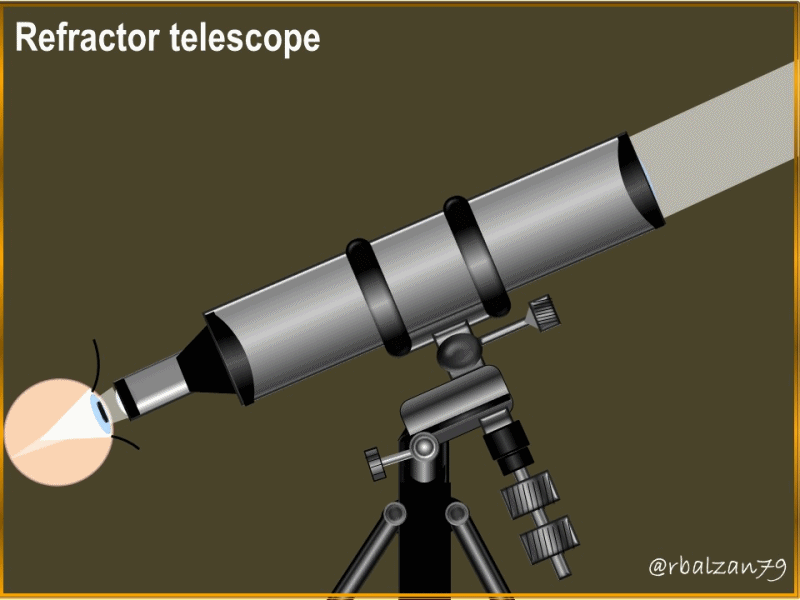
However, it is possible to find another type of arrangement of lenses in series in these optical instruments (refracting telescope), such as the one we will analyze on this occasion as it is convergent type lenses, in the objective, as in the eyepiece, ie convergent-convergent, remember that telescopes are optical instruments which in its simplest configuration (two lenses), one in the objective and the other in the eyepiece, can visualize objects or very distant bodies such as planets, stars and even galaxies.
In this opportunity we will analyze this type of refracting telescope (for being conformed by lenses) from the point of view of geometrical optics, therefore, we can express that the basic principle of the telescopes through the phenomenon of refraction of light rays by means of convergent lenses, is to converge the light rays emitted by a distant object or body at a closer point (focal point) of that objective lens, and, with the help of another converging lens (eyepiece), generate a final image, where, this last image will be formed from the image generated by our first converging lens, that is, the objective lens of that optical instrument.
For a better understanding, here are the links to the previous publications related to this thematic series:
1.- Analysis and calculations of variables in the generation of images in a convergent lens.
2.- Calculations of variables in image generation in a diverging lens.
Let us remember some important characteristics of this type of convergent lenses, we can highlight that they have two main focuses, one of them called object focus (F), and the image focus (F'), the first one (F) on the incidence side of the light rays and the other one (F') on the transmission side of the light rays, without forgetting the focal length (f), it is always necessary to take into account that, if the object of analysis is at a greater distance than the focal length, then the image will be real and therefore inverted and, moreover, located on the transmission side of the light rays, otherwise it would have opposite characteristics, i.e. it would be virtual, right, and located on the incidence side of the light rays.
Now I will show you the arrangement of the optical system of the refracting, converging-converging telescope in figure 1 below.
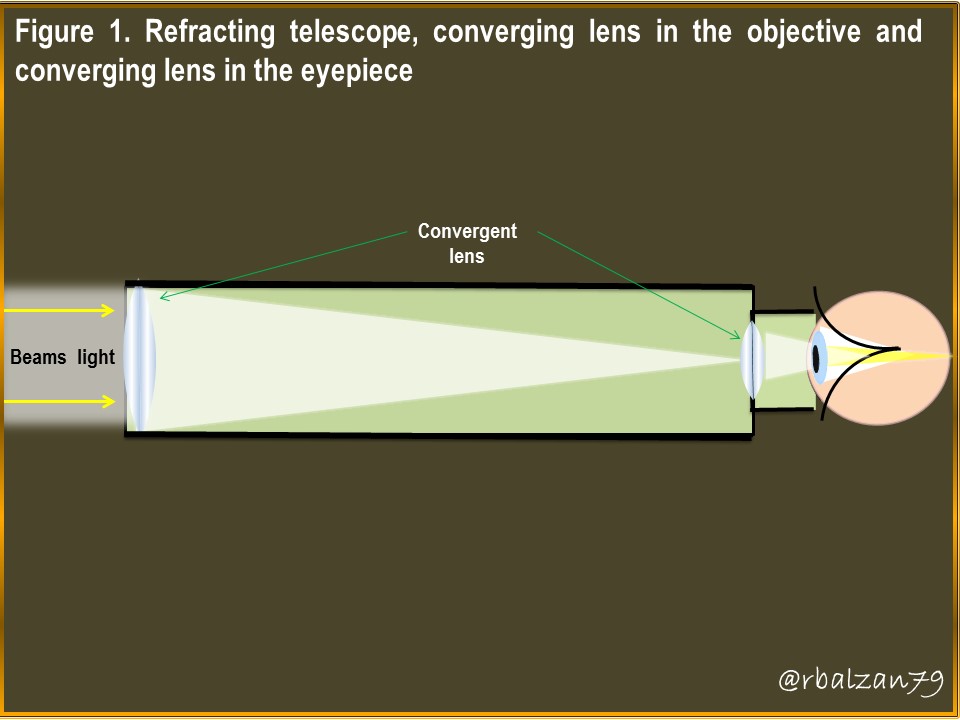
In the previous figure 1, we notice that the two lenses of the refracting telescope are of convergent type, therefore, before starting our exercise, it is necessary to remember the ray scheme of a convergent lens using three luminous rays as you can see in the following figure 2.

With this same form we will make our scheme of luminous rays, but, in series of two convergent lenses and, we will see what will be the image that will be projected on the retina of the person who is ready to use this type of refracting telescope and, to be able to visualize some body or object at long distance.
Exercise
In order to structure a refracting telescope, there are two convergent lenses, one for the objective and the other for the eyepiece, as shown in figure 1 above, knowing that the objective lens has a long focal length and the eyepiece lens has a short focal length, whose data are 38 cm and 1.9 cm respectively, in relation to the above mentioned, answer the following questions:
a.- What will be the total magnification of the telescope?
b.- What will be the orientation of the image that reaches the retina of the person observing through this telescope?
c .- How to correct the inverted image we observe with the two converging lenses of the refracting telescope?
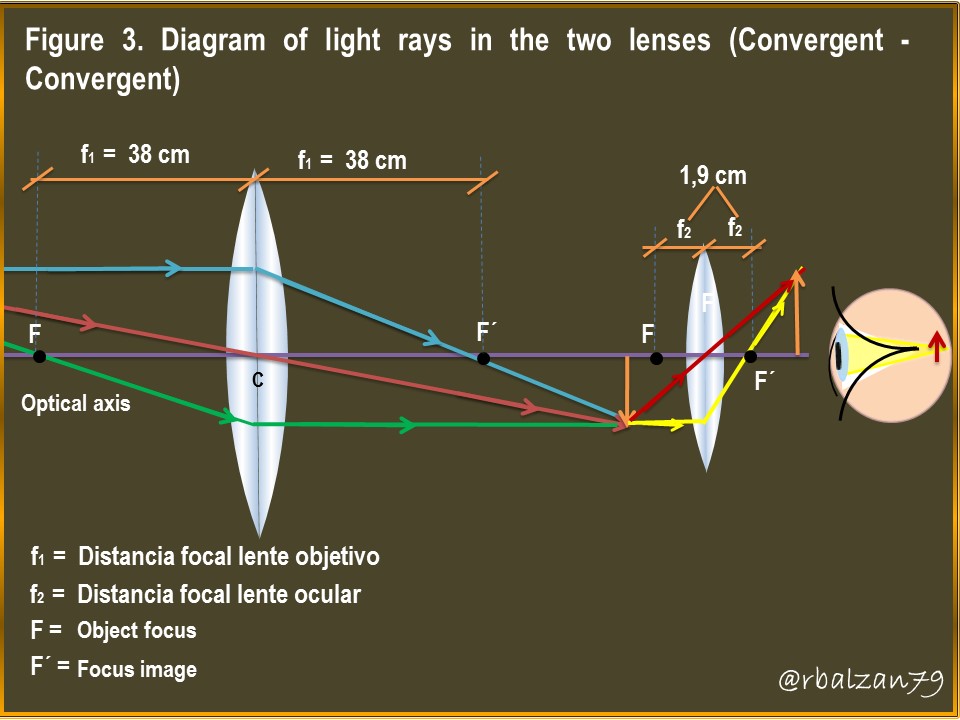
Solución
Data:
f1 = 38 cm (Focal length of objective lens).
f2 = 1,9 cm (Focal length of eyepiece lens).
a.- In order to answer our first question we can express that the magnification of a telescope as the one indicated in the previous exercise, is provided by the eyepiece lens and these are located in the focal plane of the telescope, but also note that the magnification of the eyepiece is possible thanks to the relationship of the focal length of both the eyepiece and the objective, this is carried out through the following formulation:
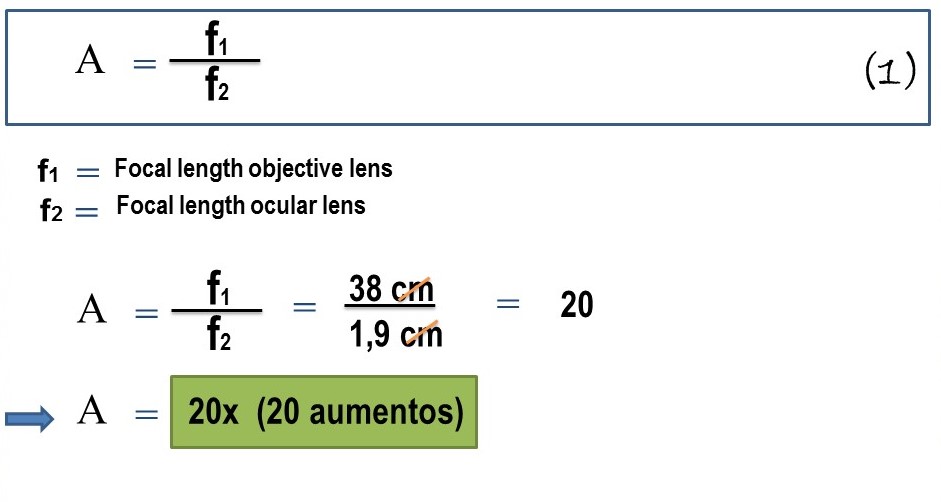
In this way we obtain the amount of total magnification (20x) offered by the telescope with the optical structure with the two converging lenses in relation to their indicated focal lengths, for example; for this case of 20x, the object or body visualized by the person using the telescope, is as if that person were at a distance of 20 times closer to where he/she is actually observing the body or object.
We could take as an example the observation of the moon through the optical system of the telescope, where this natural satellite of the Earth is located at an average distance of 384,400 km from our planet, therefore, with the vision of the telescope would be as if we were at a distance of 19,220 km from the moon, ie 384,4000 km/20x, in the same way we can do with any other celestial body located in our outer universe.
b.- Our second question is very important, since we must focus on figure 3, where, we can notice how the image that reaches the retina of the person using the telescope, is right and, when taking that image to our brain, it offers it inverted, but, it is a real image of the object or body that any person would be observing, since it is formed on the other side of the convergent lens of the eyepiece, this lens as it receives the inverted image of the objective lens, its action flips the image and places it towards the retina as right as it is observed in the ray diagram of figure 3, and, the brain flips it again placing it inverted.
c.- To answer this question, the answer would be to place another convergent lens near the eyepiece to flip the image again, so that it reaches our retina and our brain presents it to us straight as we are used to with the natural lenses of our ocular system, therefore, the scheme of light rays would be as follows:

The design of the telescope would be as shown in figure 5 below.
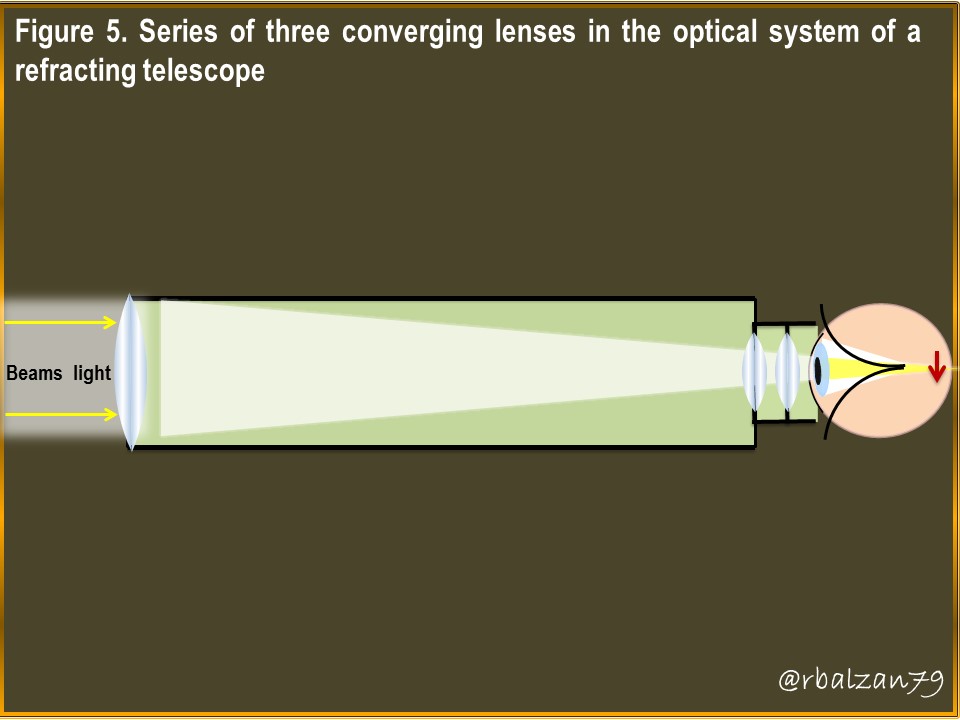
Conclusion
In fact, the phenomenon of light has allowed us to exponentially increase our intellectual capacity and, with it, the development of countless activities of our daily life, where we include research in the field of science, since optical instruments created to implement them in the knowledge of our universe are essential, such as the one mentioned in this opportunity, refracting telescope which has been greatly improved.
This time I wanted to structure with you a refracting telescope, but now with converging lenses in its optical system and thus to visualize the type of image that would be projected on the retina of the person using this type of telescope with two converging lenses, being able to notice a right image on the retina that the brain turns it upside down and we see it as upside down, for correction we must place another converging lens in the eyepiece or objective to see the right image.
In the same way we were able to calculate the important magnitude of the total magnification of this optical system, which for these characteristics was 20x (20 magnifications), it is like cutting 20 times the distance between the object or body that we are observing at long distance, later we will continue to expand other optical instruments with the application of important calculations through mathematical formulas.
Until another opportunity my dear friends.
Note: The images were created by the author using Power Point and Paint, the animated gif using PhotoScape.
Recommended bibliographic references
[1] GEOMETRIC OPTICS. Link.
[2] Convergent lenses. Link..
[3] Lens Basics. Link.
[4] Building a Telescope. Link.
Thanks for your contribution to the STEMsocial community. Feel free to join us on discord to get to know the rest of us!
Please consider delegating to the @stemsocial account (85% of the curation rewards are returned).
You may also include @stemsocial as a beneficiary of the rewards of this post to get a stronger support.
Thanks for the valuable support @stemsocial community.